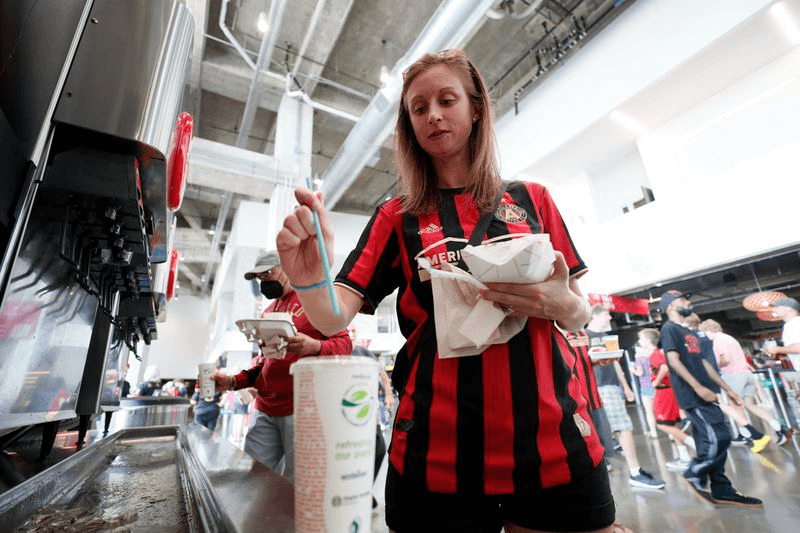A time-lapse video shows a baby blue straw sitting in a tank of water and rocks.
Not much happens at first, as a counter of days zips from 1 to 24. But by Day 25, layers of the straw begin to peel away. As the counter reaches Day 43, holes line the sides before the straw breaks apart on Day 45. About two weeks later — on Day 58 — the straw is gone.
If this were a conventional plastic straw, it could take 1,000 years to break down, one expert said.
But the straw in the video, and appearing at Mercedes-Benz Stadium and restaurants such as Dunkin’ Donuts, is made from a biodegradable compound called Nodax that’s patented by Georgia-based Danimer Scientific. A metro Atlanta company turns Nodax into a product it calls Phade — pronounced “fade” — that’s designed to look and feel like a regular plastic straw.
Single-use plastics made from petrochemicals dominate packaging in the U.S. in part because of their low cost and convenience. But they’re polluting the planet and contributing to climate change.
Experts said materials like Nodax and products like Phade are steps toward solving the problem, but there could be limitations to their ability to biodegrade, and Nodax may not have the right characteristics to replace all disposable plastic items. Costs to bring production up to scale could be high, they said.
This is an excerpt. Read the original post here































